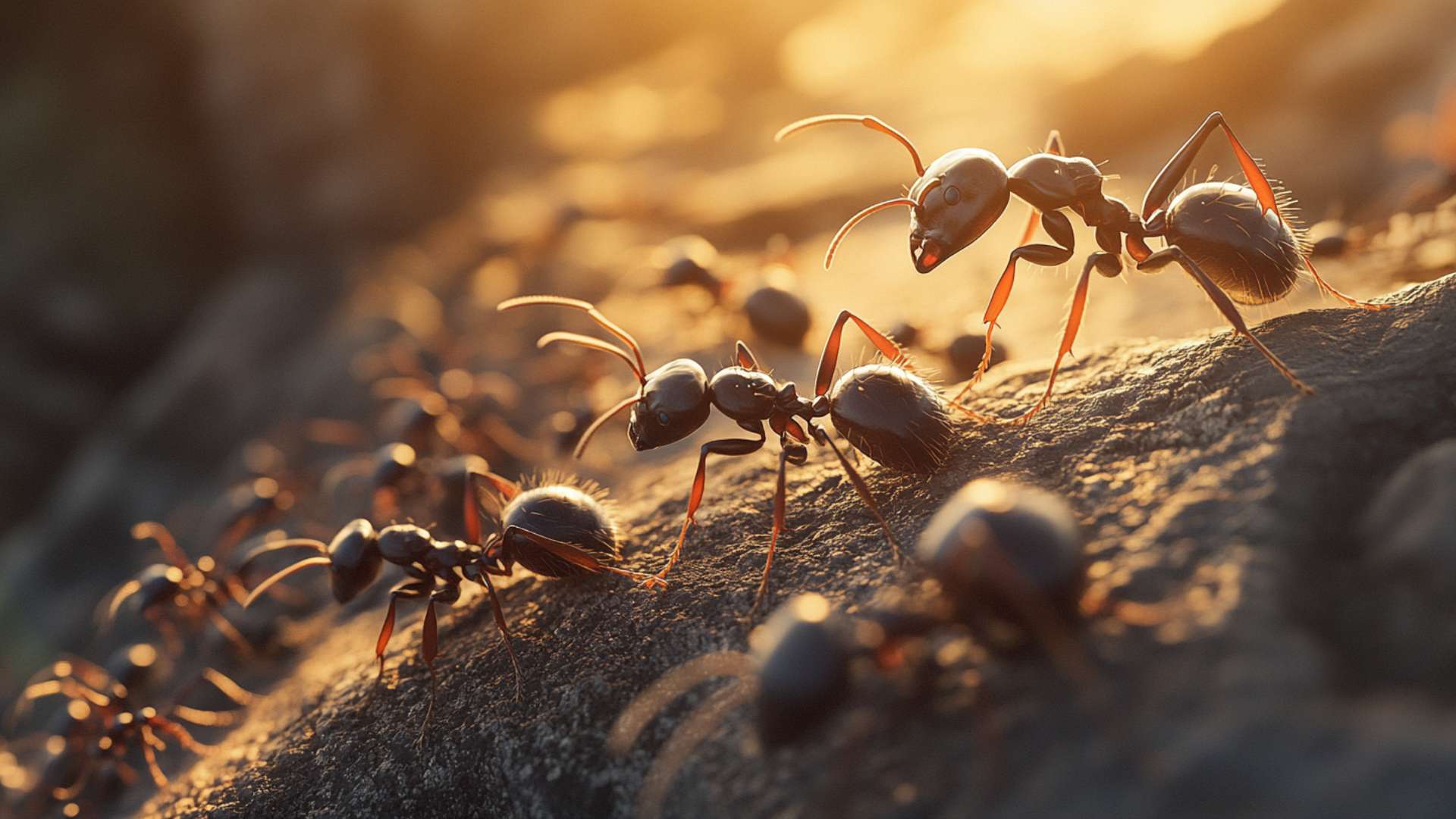Welcome to the fascinating world of ants, where these tiny creatures exhibit a complex social structure that is nothing short of remarkable. Ants, with their highly organized colonies and division of labor, have captivated the curiosity of scientists and nature enthusiasts alike.
In this article, we will delve into the intriguing behaviors of ants, specifically focusing on how to lure a queen ant out of its nest. Understanding ant behavior is not only intellectually stimulating but also crucial for effective pest control.
The Fascinating World of Ants
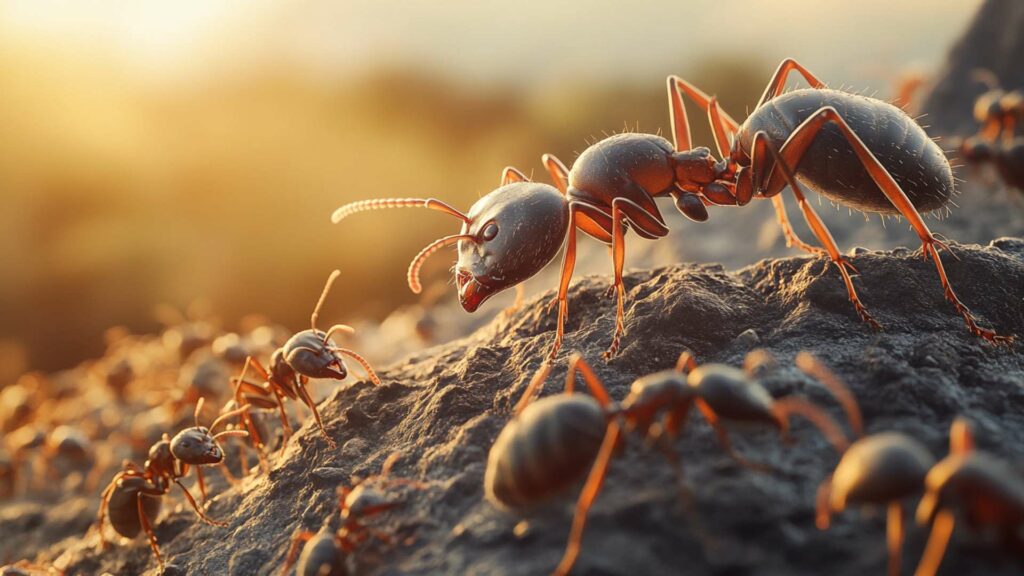
Ants are truly remarkable creatures. They live in highly organized societies known as colonies, with thousands or even millions of individuals working together for the greater good. Every ant has a specific role within the colony: workers gather food and build intricate underground tunnels, soldiers protect the nest from threats, and queens reproduce to ensure the colony’s survival.
Within a mature colony entrance knowing place deep inside expansive networks of tunnels and chambers species like an ant farm or even a kiddie pool can be used to observe their daily activities closely. If you’re fortunate enough to catch sight of these industrious insects going about their business, you’ll notice several queen ants walking with purpose alongside workers tirelessly fulfilling their assigned tasks.
The Importance of Understanding Ant Behavior for Effective Pest Control

Ant infestations can be annoying and disruptive in both residential and commercial settings. To effectively manage them without resorting to harmful chemicals or relying solely on local pest control companies, it is essential to understand how ants behave.
By comprehending their habits and instincts, we can develop more humane strategies for controlling ant populations while respecting their place in nature’s delicate balance. Instead of simply eradicating all ants indiscriminately— which may lead to ecological imbalances— it is wiser to focus on managing the presence of ants in a way that minimizes conflicts with human activities.
In the following sections, we will explore techniques and methods to lure a queen ant out of its nest, allowing for relocation rather than extermination. This approach not only ensures the removal of the reproductive individual responsible for colony growth but also offers an opportunity to appreciate the intricate systems that ants have established over millions of years.
Understanding the Queen Ant
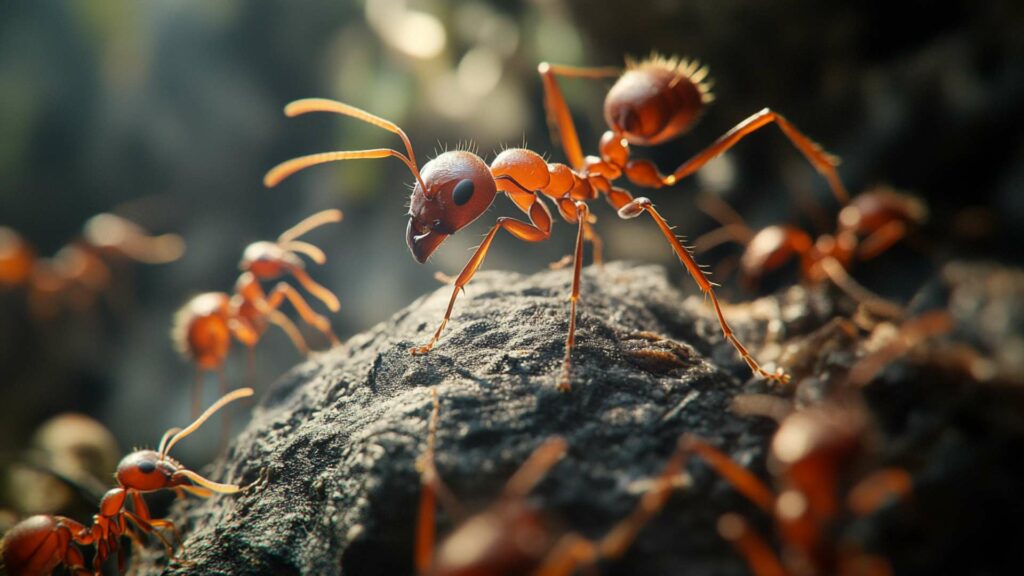
In the mesmerizing world of ants, the queen holds a position of utmost importance within the colony. As the matriarch of the parent colony, she is responsible for populating and maintaining the entire ant society. The primary role of a queen ant is to lay eggs, ensuring the survival and growth of her colony.
These eggs hatch into worker ants, soldiers, and sometimes even new queens or males. Without a queen, an ant colony cannot survive for long as it loses its ability to replenish numbers.
Physical characteristics and behavior patterns of queen ants
Queen ants possess distinct physical characteristics that set them apart from other members of their colony. Typically, they are larger than workers or soldiers and have elongated abdomens that enable them to produce and store large numbers of eggs. Interestingly, in some rare species, queen ants may also have wings during their early stages.
Behaviorally, queen ants exhibit fascinating patterns within their colonies. In most ant species, queens rarely leave their nests once they have established themselves as egg-laying machines.
They spend their lives inside protected chambers deep within the nest while workers tend to their every need. As they mature and grow older, some queens may begin producing winged ants known as alates or reproductive individuals who venture out during mating flights to establish new colonies.
The size difference between workers and queens can be quite striking – it’s almost like comparing an elephant to an amoeba! Queen ants can be up to 10 times larger than worker ants in some cases.
Additionally, if you ever get close enough to observe a live queen ant closely (perhaps through your personal ant farm or while catching one for relocation), you’ll notice that they possess extremely tiny heads relative to their bodies – a feature that distinguishes them from other castes. Understanding these key aspects of queen ants is crucial when attempting to lure them out of their nests.
By comprehending their roles within colonies and recognizing their unique physical characteristics, we can develop effective strategies for successfully coaxing them into the open. So, let’s dive deeper into the intricacies of attracting these mighty queens to more ant colonies and unravel the secrets of colony building in the next sections of this article.
Identifying the Nest Location
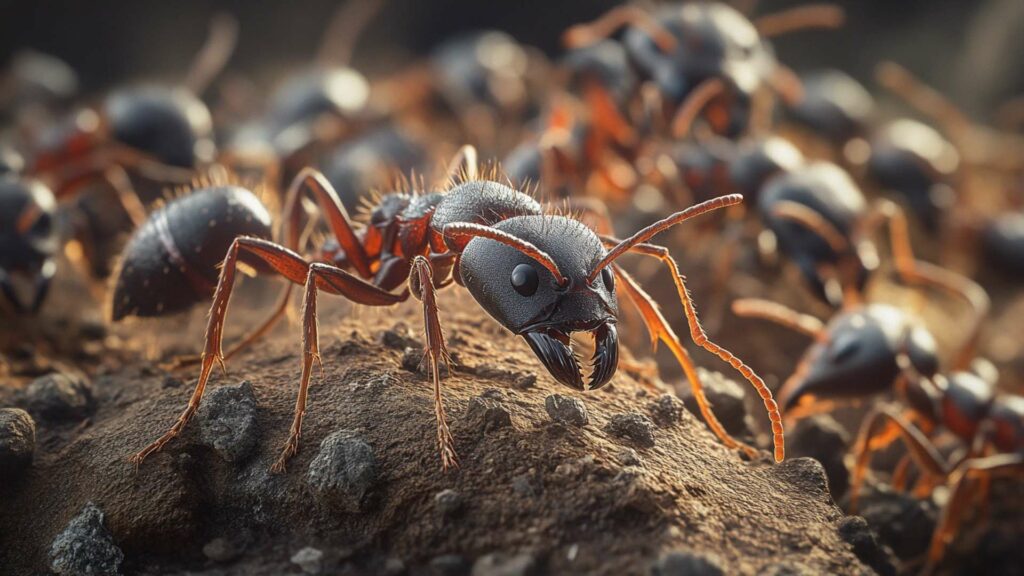
When it comes to luring a queen ant out of its nest, the first step is to become an astute observer of their intricate trails and foraging patterns. Take some time to watch these industrious insects in action. Follow their trails as they scurry back and forth, carrying tiny morsels of food or building materials.
Observe their behavior closely – you might notice different ants performing specific tasks like food collection or nest maintenance. These trails provide valuable clues that can lead you straight to the nest.
Locating entry points to the nest
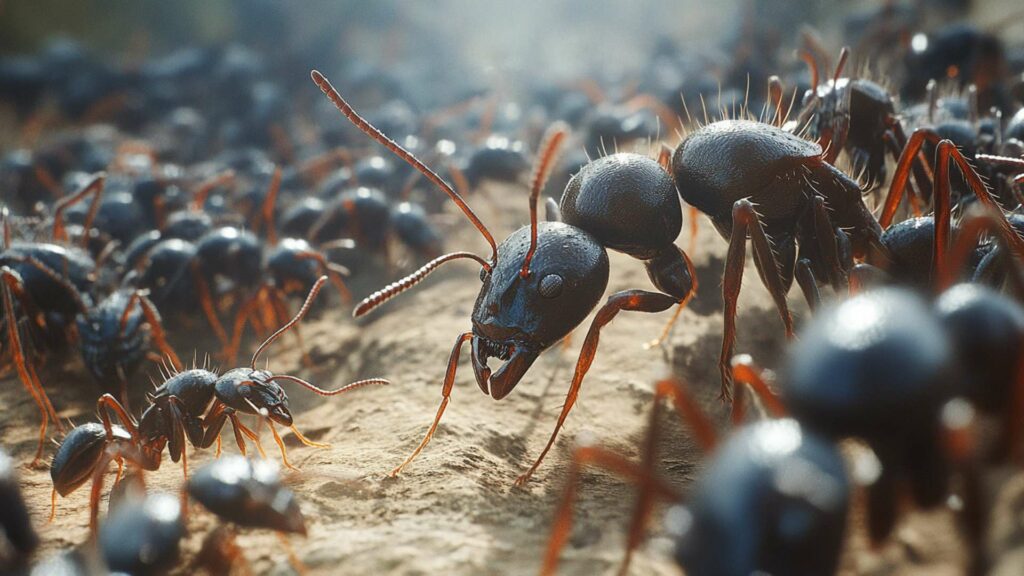
Once you have identified the general area where the ants are active, your next goal is to pinpoint the exact entry points into their nest. Ants typically create numerous entrances and exits to ensure efficient movement within their colony. Look for small holes in soil, cracks in pavement, or gaps in walls where ants may be entering or exiting.
Remember that ants are incredibly resourceful and can find creative ways into buildings as well. To aid your search, try placing some tempting ant food near suspected entry points while keeping a close eye on them from a distance.
This will not only help confirm a particular entry point but also attract more worker ants, making it easier for you to trace their movements back to the main nest. If you’re having trouble locating the entrance visually, another technique worth trying is following wingless queens during their mating flights (also known as nuptial flights).
Winged queens will leave an existing colony in search of mates and new colony locations. By observing carefully during certain times of the year when these flights occur (usually spring or summer), you might spot wingless queens walking around scouting new nesting areas.
Remember that patience is key here; it may take some time and observation before identifying an ant’s nest accurately. But with attentiveness, you’ll soon be on your way to successfully luring that elusive queen ant out of her domain.
Creating an Attractive Environment Outside the Nest
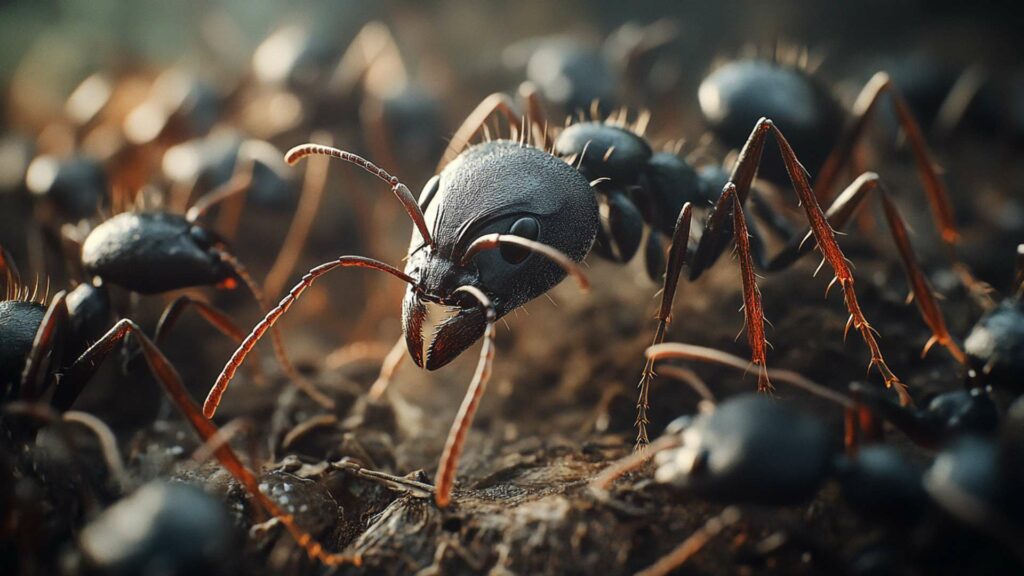
Picture this: you’re a queen ant, nestled deep within your cozy underground domain, surrounded by a bustling colony of loyal subjects. As you lay there, blissfully unaware of the world beyond, little do you know that someone is planning to entice you out of your sanctuary.
In order to lure you ant hill back out of your nest, we must first create an irresistible dining experience right at your doorstep. One foolproof way to tempt a queen ant is by offering her favorite foods.
These discerning creatures have quite the palate when it comes to their culinary preferences. Sugar and protein are two types of food that ants find particularly enticing.
The sweet taste of sugar acts as an irresistible treat for their tiny tongues, while protein provides them with essential nutrients. By strategically placing sugary snacks like drops of honey or dissolved sugar water near the nest entrance, we can catch their attention and pique their interest.
Types of food preferred by ants (sugar, protein, etc.)
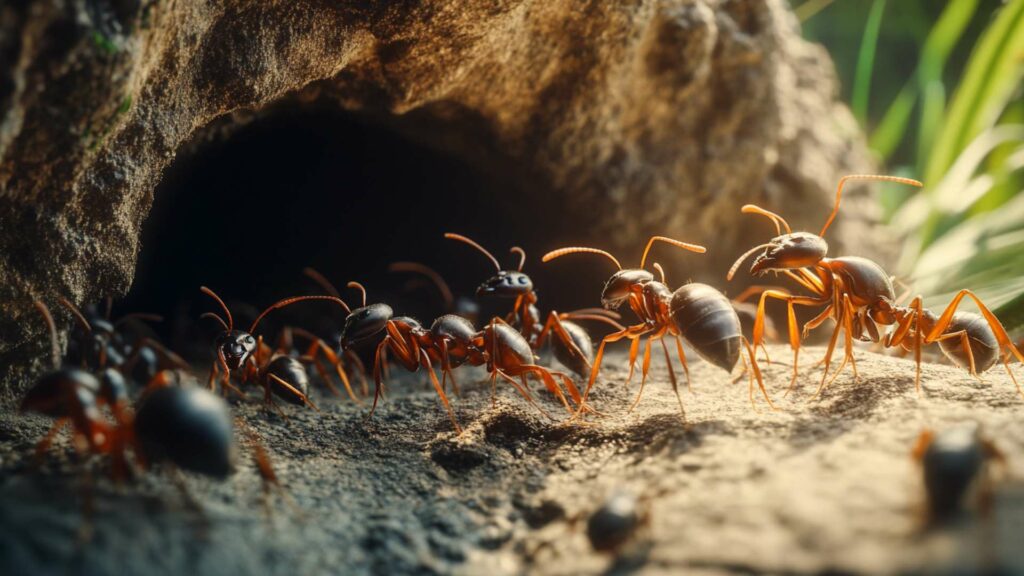
Now that we have established the importance of providing food sources near the nest entrance, let’s delve into some specifics about what ants truly relish in their diet. Sugar is undoubtedly one of their greatest weaknesses—a delectable nectar-like substance that sends them into a feeding frenzy. Whether it’s granulated sugar or sugary syrups like maple syrup or agave nectar, these sweet treats are guaranteed to attract swarms of hungry ants.
However, let’s not neglect another vital component in an ant’s diet—protein. Just like humans need protein for growth and energy, ants require it too!
Sources such as small insects or bits of meat will entice them with their savory aroma. If you’re feeling adventurous (and don’t mind handling insects), catching small bugs like fruit flies or crickets can provide a protein-rich meal that ants won’t be able to resist.
Placing bait stations or homemade traps strategically
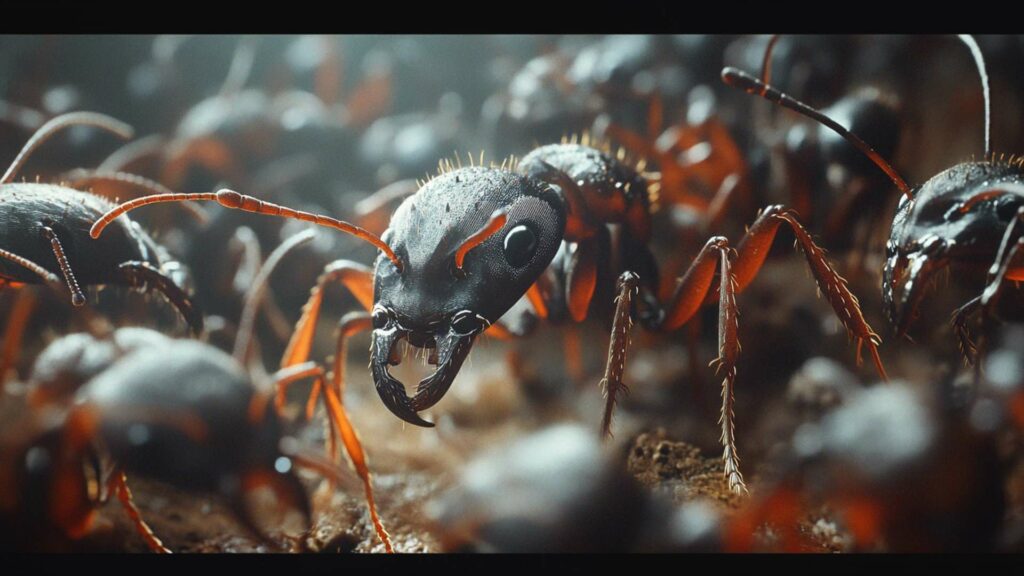
Now that we know what ants crave, it’s time to strategize the placement of bait stations and traps to catch ant queens. These clever contraptions act as alluring pit stops for our unsuspecting queen ant.
Bait stations are commercially available devices designed to attract ants with tasty morsels while keeping them contained. Alternatively, you can unleash your creativity and construct homemade traps using common household items.
Position the bait stations or homemade traps near the nest entrance or along ant trails leading to the nest. This strategic placement ensures that the ant queen will encounter these irresistible offerings on her journey in and out of the nest.
Make sure to monitor and replenish these sources regularly because hungry ants won’t settle for empty platefuls—they’ll seek food elsewhere, possibly abandoning their original path altogether. Remember, patience is key when luring a queen ant out of her nest.
Rome wasn’t built in a day, nor will your queen be enticed away with just one meal. So stay vigilant, observe their behavior closely, and adapt your strategies if necessary—soon enough, you’ll have successfully coaxed her into revealing herself!
Using Pheromones to Lure the Queen Out
Ants, those tiny creatures bustling around our backyards and invading our picnics, have a hidden language that governs their complex societies. This language is none other than pheromones, chemical signals that ants use to communicate with each other. Pheromones play a crucial role in ant behavior and can be harnessed to lure a queen ant out of her nest.
Synthetic Pheromones: Playing Nature’s Tune
To effectively attract a queen ant out of her nest, one can make use of synthetic pheromones – artificially created chemicals that mimic the natural scents produced by ants. These synthetic pheromones imitate the specific chemical signals emitted by queen ants during certain behaviors or events.
By strategically placing these synthetic pheromones near the nest or along known foraging trails, we can manipulate the behavior of the ants and entice the queen to venture out. Another option is utilizing natural alternatives such as lures.
Some enterprising individuals have experimented with using organic substances like crushed ant exoskeletons or extracts derived from existing ant colonies to create alluring scents. While these methods may not be as precise as synthetic pheromones, they can still serve as effective bait for attracting curious queens seeking new colony locations.
Dancing with Chemistry: The Power of Pheromone Trails
Understanding how ants communicate through pheromone trails unlocks another technique for luring queen ants out of their nests. When an ant finds a food source or desirable location, it leaves behind a trail of pheromones for its fellow workers to follow.
By creating an enticing scent trail leading away from the nest entrance using synthetic or natural substances, you can tempt the queen to walk along this path in search of new opportunities. Pheromone trails also have the advantage of attracting not only the queen but also other ants from the colony.
This can facilitate a smoother transition when relocating the queen, as she may be more likely to follow a trail that is already bustling with activity. By creating an appealing environment filled with enticing pheromones, you increase your chances of successfully luring out the queen and potentially capturing her.
Caution and Care: Respectful Pest Control
While using pheromones to lure a queen ant out of her nest can be an effective method, it’s essential to approach pest control with caution and care. Understanding the behavior and biology of ants allows us to employ humane methods that minimize harm while still achieving our desired results.
By observing these fascinating insects and studying their intricate systems, we can appreciate nature’s wonders while responsibly managing pest issues. Remember, each ant species may have unique preferences when it comes to pheromones or scents they find alluring.
Experimenting with different substances or methods may be necessary to entice certain rare species or particular queens. So don’t hesitate to embark on your own personal ant farm adventure – just remember that bright ideas combined with compassionate action are key in our quest to coexist harmoniously with these tiny yet extraordinary creatures.
Disturbing the Nest Environment
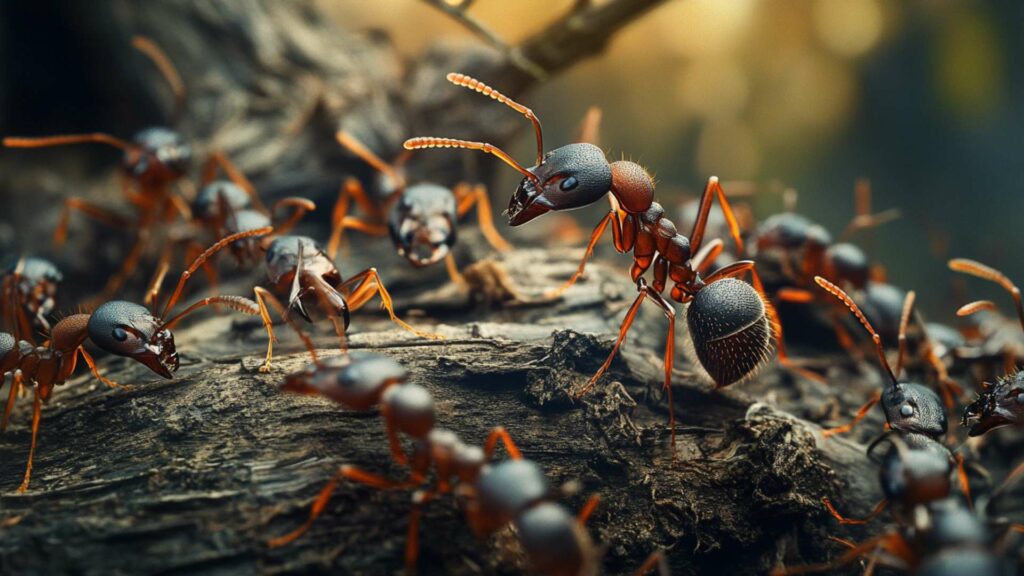
To successfully lure a queen ant out of her cozy nest, you’ll need to create a sense of disturbance. One effective method is tapping or gently shaking the queen ant venturing nest. Now, I don’t mean beating it like a drum or giving it a wild shake like you’re in an earthquake.
We want to mimic subtle disturbances that would naturally occur in their environment. By doing so, we pique the curiosity of the queen and entice her to investigate what’s going on outside.
Simulating natural disturbances like predators or environmental changes
Ants are incredibly attuned to their surroundings, always on high alert for potential threats or changes in their habitat. To attract the queen’s attention further, try simulating natural disturbances that ant’s active ant colonies would typically encounter.
You can create these disturbances by introducing subtle hints of predator activity around the nest area. Place small objects like twigs or leaves near the entrance to mimic animal tracks or signs of disturbance caused by wind or rain.
Alternatively, you could also manipulate the environment by introducing mild changes that ants would perceive as potential threats. For instance, you might sprinkle some water around the entrance to simulate rainfall nearby, sowing seeds of suspicion within the colony.
Using vibration devices as an alternative method
If tapping and shaking doesn’t yield desired results, fear not—you can employ vibration devices as an alternative method for creating disruptions that will intrigue our queen friend. Some creative minds have even devised handheld vibration devices specifically tailored for this purpose!
By generating controlled vibrations near the ant nest entrance, we imitate natural phenomena such as animals scurrying about or distant construction work. Consider using one of these custom-made tools if you’re feeling adventurous and want to adopt modern techniques in your quest to lure out a queen ant.
Just make sure to use them gently and aim for simulating natural disturbances rather than causing chaos. We’re here to encourage exploration, not trigger a full-blown ant panic.
By employing these disturbance techniques, you’ll be one step closer to coaxing the elusive queen ant out of her nest and into your hands. But remember, patience is key.
It may take some time for the queen to respond, as she needs to assess whether it’s safe or whether she should stay put with her trusted colony members. So, observe closely and be prepared for a bit of an anticipation-filled adventure as you navigate the intricate world of ants.
Patience and Observation

When it comes to luring a queen ant out of her nest, patience is truly a virtue. Queen ants are cautious creatures, especially when it comes to venturing outside their nests.
It takes time for them to feel comfortable enough to explore new surroundings. Therefore, it is essential not to rush the process.
Allow ample time for the queen ant to respond positively to your luring techniques. Remember, you are dealing with a delicate balance of nature here, so rushing could disrupt the whole process.
Monitoring ant activity closely without interfering
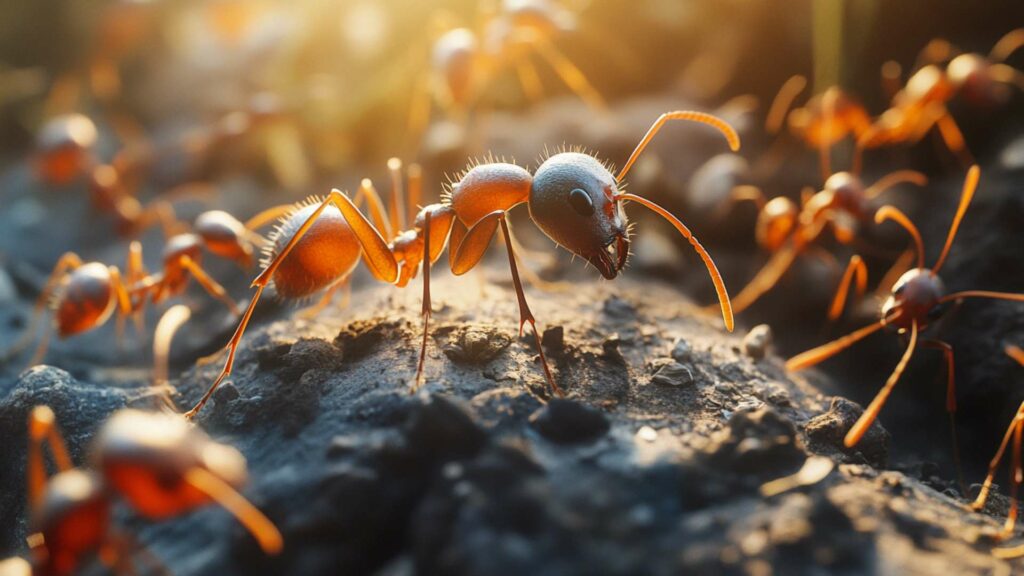
While you wait patiently for the queen ant’s emergence from her nest, it is crucial to monitor the overall activity of the ant colony closely. By doing so, you can gain valuable insights into other ant colonies, into their behavior, and understand if your luring methods are having any effect.
However, do bear in mind that interfering too much may disturb their natural routine and make them suspicious or hesitant. Observe how worker ants interact with each other or how they react when presented with bait stations or traps nearby.
Are they actively seeking food sources or showing signs of attraction towards them? These observations can provide useful clues about whether the queen ant is enticed by your efforts.
Additionally, pay attention to any changes in behavior within the colony itself. If you notice an increase in worker ants coming and going from specific areas around the nest entrance where you have set up food sources or traps, it may indicate that the queen ants are showing interest and may soon follow suit.
Remember, successful pest control often requires both patience and keen observation skills. By allowing enough time for the queen ant’s response and closely monitoring the queen ant’s wandering activity without interference, you increase your chances of successfully luring her out of her nest.
So sit back and watch nature’s fascinating spectacle unfold before your eyes. The intricate world of ants is full of surprises, and with patience and attentive observation, you might just witness the queen ant taking her first courageous step out of the nest.
Capturing and Removing the Queen
Using a soft brush or tweezers to carefully collect her
Once you’ve successfully lured the queen ant out of her nest, it’s time to capture and remove her. The first method involves using a soft brush or tweezers to gently pick up the queen ant without causing any harm. It’s important to be cautious and delicate during this process because a queen ant is crucial for the survival of her colony.
To capture the queen ant, position the brush or tweezers near her body and slowly scoop her up. Be careful not to grip too tightly or squeeze too firmly, as this could injure or kill her.
Take your time and ensure a steady hand while performing this task. Remember, we aim for humane pest control methods that prioritize both our own interests and the well-being of these fascinating creatures.
Transferring her into a suitable container for relocation
After capturing the queen ant, it is essential to provide suitable conditions for transportation during relocation. Prepare a container that is spacious enough for her but secure enough to prevent escape. A deep container buried partially into moist soil mimics a natural environment where she can feel safe.
Consider using an opaque container that limits light exposure since some ants may become stressed in bright environments. Additionally, make sure there are sufficient air holes in the lid or sides of the container to allow proper ventilation.
This will prevent any difficulties in breathing during transportation. When preparing the container, you can also include some damp cotton balls or pieces of moist soil.
These mimic natural nesting materials found underground and help maintain humidity levels necessary for survival during relocation. Once you’ve transferred the queen ant into this new habitat setup, remember to handle it with care and avoid sudden movements that might distress or harm her.
By following these methods of capturing and relocating ant queens with utmost care and consideration, we can ensure the preservation of ant colonies while finding a balance between our human needs and the appreciation of nature’s intricate systems. Now that we have covered the necessary steps to capture and relocate a queen ant, it’s crucial to emphasize the importance of understanding ant behavior before embarking on such endeavors.
Remember, capturing a queen ant is only recommended when absolutely necessary or during scientific research. Respect male ants and their role in the ecosystem and consider alternative methods if possible.
Conclusion
Importance of Humane Pest Control Methods
Ants, with their well-established colonies, intricate social structures, and essential role in ecosystems, remind us of the importance of humane pest control methods. While it may be tempting to resort to harmful chemicals or destructive measures to eliminate ant infestations, it is crucial to consider the broader impact on the environment.
By employing luring techniques to remove a queen ant from its nest, we prioritize a more compassionate approach that minimizes harm to both ants and their surroundings. In recent years, there has been growing recognition of the interconnectedness of all living organisms and the need for sustainable pest management practices.
Embracing humane pest control not only protects ants but also safeguards other beneficial creatures that rely on them as a food source or ecological partners. By considering alternative methods like luring and relocation, we pave the way for coexistence rather than confrontation.
Appreciating Nature’s Intricate Systems through Understanding Ants
Taking time to understand ants’ behavior and their fascinating social systems brings us closer to appreciating nature’s intricacies. Ants are among Earth’s most successful creatures, with over 12,000 known species worldwide.
Their communities range from small groups with a few hundred individuals to supercolonies spanning vast territories. Each ant plays a vital role in maintaining its own ant colony’s survival.
Through our exploration of how to lure a queen ant out of its nest, we gain insights into the complexities of ant life cycles and communication mechanisms. We witness the extraordinary adaptability and intelligence that has allowed ants to thrive for millions of years.
Understanding these remarkable insects gives us an opportunity not only to solve immediate pest problems but also fosters an appreciation for nature at large. As we delve deeper into the world of ants through luring techniques and observation, we come face-to-face with remarkable moments: queens flying to find new colony locations, young colonies organizing their founding chambers, and worker ants tirelessly supporting their queen’s every need.
We witness the beauty of nature’s meticulous design, from the delicate process of ant mating to the intricate organization of mature colony entrances. Embracing humane pest control methods and delving into the wonders of ant behavior allows us to coexist harmoniously with these remarkable creatures.
By utilizing luring techniques to remove a queen ant from its nest, we promote compassion and understanding while preserving the delicate balance of ecosystems. As we appreciate nature’s intricate systems through understanding ants, let us find inspiration in their resilience and adaptability, fostering a world where humans and ants can thrive side by side.
Deter Ants with D-Termination: Las Vegas’ Top Pest Control Solution!

If you’re grappling with ant troubles, D-Termination is here to provide assistance. Our proficient team excels at discouraging ants, rejuvenating cleanliness, and preserving the integrity of your surroundings. Bid farewell to ants—opt for D-Termination for highly effective pest control today!
Reach out to us at 702-919-6310 or visit dtermination.com to schedule your ant control service and regain your space from these unwanted pests.
Frequently Asked Questions:
It’s usually best not to disturb a queen ant in her nest as it can harm the colony.
Queen ants are attracted to suitable nesting sites and environmental conditions.
The easiest way to catch a queen ant is to place baits or traps in areas where they forage.
Creating a queen ant trap can involve using a setup with a suitable nesting chamber and attractive food or pheromone bait.

